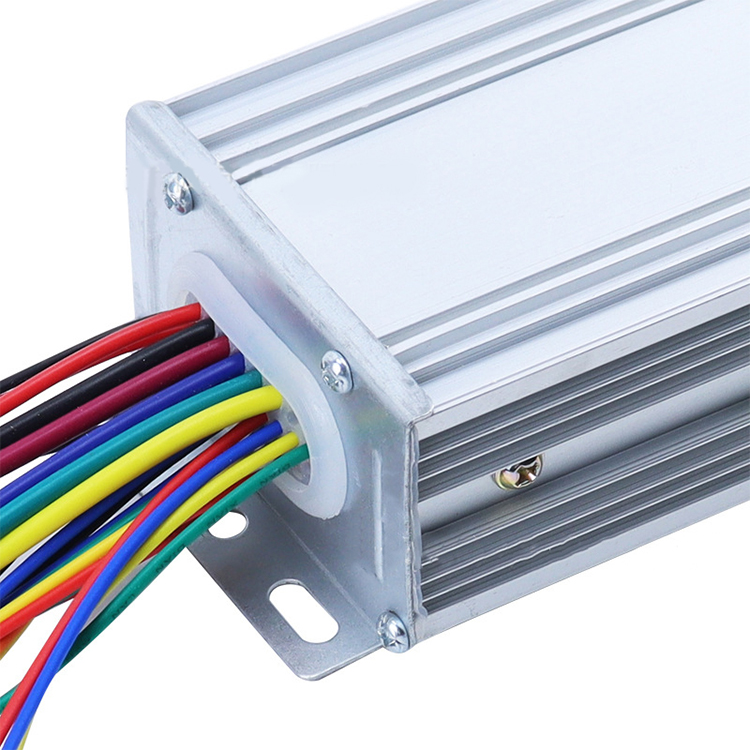The electric motorcycle motor controller acts as the brain of the powertrain, managing the flow of electrical energy from the battery to the motor based on user input, environmental conditions, and safety parameters. It is responsible for controlling motor speed, torque, and direction, making it critical for the vehicle's responsiveness and overall ride quality.

One primary function of the controller is throttle interpretation. When the rider twists the throttle, the controller converts this input into electrical signals that regulate the voltage and current sent to the motor. By modulating these electrical parameters, the controller adjusts the motor's rotational speed smoothly, avoiding jerks or sudden surges of power.
In electric motorcycles that use brushless motors, the controller also performs electronic commutation. Unlike brushed motors, brushless motors require precise timing of current flow in the motor windings to generate rotation. The controller achieves this by switching the current through different coils in a sequence synchronized with the rotor's position, often using sensors or sensorless algorithms.
Beyond power management, the motor controller incorporates several protective functions. It monitors temperature, current, and voltage to prevent damage caused by overheating, short circuits, or overcurrent situations. Additionally, it can handle regenerative braking, converting kinetic energy back into electrical energy during deceleration, thereby extending battery life and range.
The electric motorcycle motor controller is a sophisticated device that ensures efficient, smooth, and safe operation. Its design and quality significantly impact the motorcycle's performance, reliability, and rider experience.
Selecting the right brushless controller for an electric vehicle is a critical step that requires consideration of several technical and practical factors. Brushless controllers are designed to operate brushless DC (BLDC) or permanent magnet synchronous motors (PMSM), commonly used in modern electric vehicles due to their high efficiency and durability.
It is essential to consider the voltage and current ratings of the controller. These specifications must match the motor and battery pack to avoid underperformance or damage. For example, a controller rated for 72V and 50A will not work efficiently with a motor or battery operating at higher voltages or currents.
Next, the control method is important. Some controllers use sensored operation, relying on Hall effect sensors in the motor to detect rotor position and provide precise commutation. Others use sensorless control, which estimates rotor position based on back-EMF signals. Sensored controllers typically offer smoother startups and better low-speed control, while sensorless controllers reduce wiring complexity and cost.
Another factor is the controller's programmability. Many modern controllers allow customization of parameters such as acceleration curves, regenerative braking strength, and current limits through software interfaces. This flexibility helps tailor performance to specific vehicle types or rider preferences.
Thermal management is also vital. Controllers generate heat during operation, especially under heavy loads. A controller with adequate heat sinks, cooling fans, or liquid cooling capabilities can maintain performance and prolong component life.
Finally, protection features such as overcurrent, overvoltage, undervoltage, short circuit, and temperature shutdown are critical to ensure the safety of both the vehicle and rider.
Understanding its role helps users appreciate its complexity and importance. When choosing a brushless controller, attention to compatibility, control methods, programmability, and protection features ensures a reliable and enjoyable electric vehicle experience. Advances in controller technology continue to enhance the performance and capabilities of electric motorcycles and vehicles worldwide.